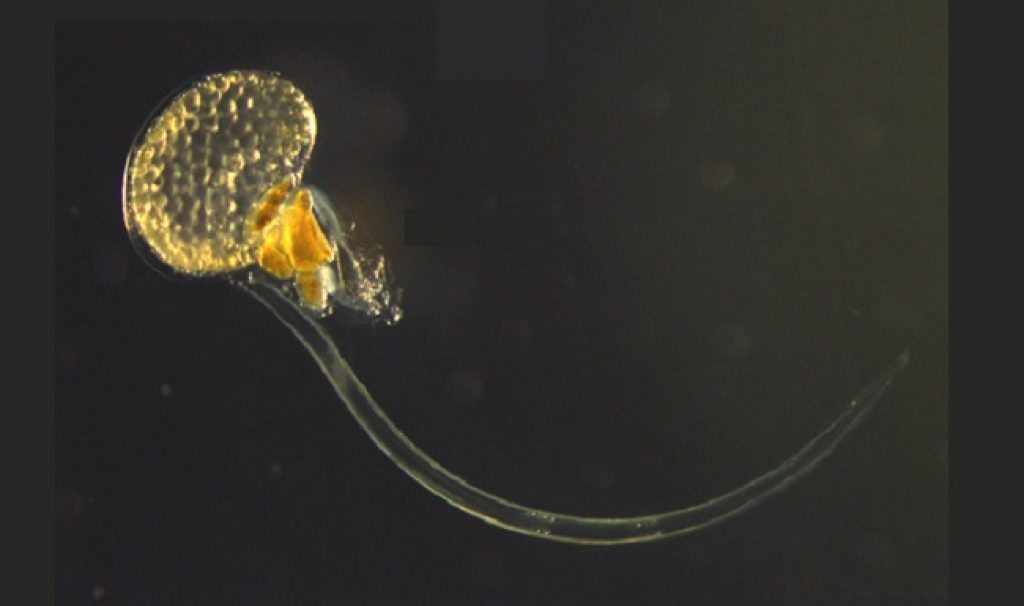
AsianScientist (Jun. 25, 2015) – Researchers at the Graduate School of Science, Osaka University have found the first example of DNA interference in multicellular animals using the marine plankton Oikopleura dioica. The results of their findings have been published in Proceedings of the Royal Society of London B.
RNA-induced gene silencing, better known as RNA interference (RNAi), is a defensive mechanism that exists in a wide range of eukaryotes. Used in cells to inhibit gene expression by targeting the destruction of selected mRNA, RNAi is an invaluable research tool used by researchers to modulate gene expression.
In contrast, DNA-induced gene silencing, known as DNA interference (DNAi), has been only found in a few species of plants, ciliates and archaea and has not been described in multicellular animals.
To examine the effect of DNAi in the marine invertebrate O. diocia, researchers introduced polymerase chain reaction (PCR) fragments encoding the Brachyury gene into O. dioica and found that this decreased the amount of mRNA sequence specifically and induced tail malformation reminiscent of RNAi-mediated gene knockdown phenotype of Brachyury. This gene knockdown was induced not only by PCR fragment covering coding region of the Brachyury gene but also 5’-flanking region and intron.
The research is the first example of DNAi in multicellular animals. This phenomenon could potentially be applied for a new gene knockdown method for the characterization of gene functions.
The article can be found at: Omotezako et al. (2015) DNA Interference: DNA-Induced Gene Silencing In The Appendicularian Oikopleura dioica.
———
Source: Osaka University.
Disclaimer: This article does not necessarily reflect the views of AsianScientist or its staff.












